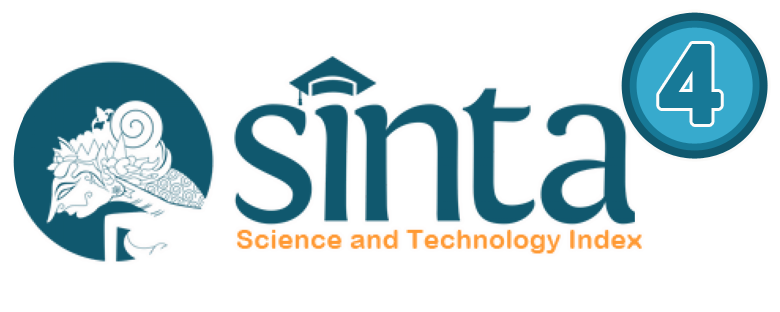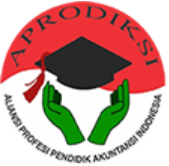Increasing Financial Literacy With “Moma” Money Management Learning Media In Vocational High Schools
Meningkatkan Literasi Keuangan Dengan Media Pembelajaran “Moma” Money Management Di Sekolah Menengah Kejuruan
DOI:
https://doi.org/10.21831/jpai.v23i01.83973Keywords:
Financial literacy, media learning, MOMAAbstract
Financial literacy is one of the essential life skills that must be possessed by every individual, especially vocational students. However, financial learning media used in schools tend to be conventional and not interactive. Therefore, innovation is needed in the form of interactive learning media that can present relevant, interesting, and applicable learning experiences. This research is development research (R&D) that aims to improve the financial literacy of Vocational High School students through the development of "MOMA" Money Management learning media. The product feasibility test was conducted by material experts, media experts, teachers, and students. Data collection was done through interviews and questionnaires. The data collection instruments used were interview guidelines, expert validation questionnaires, teacher response questionnaires, and student response questionnaires. The feasibility of the learning media produced was analysed using the conversion of 5 quantitative categories. The result of this research is an android game-based learning media "MOMA" Money Management in learning financial literacy Vocational High School. The learning media “MOMA” is proven to be effective in improving students' understanding of the basic concepts of financial management. The learning media is considered feasible by material experts, media experts, teachers, and students. This media is also adaptive and easily accessible.
References
Agarwalla, S. K., Barua, S. K., Jacob, J., & Varma, J. R. (2015). Financial Literacy among Working Young in Urban India. World Development, 67, 101–109. https://doi.org/10.1016/j.worlddev.2014.10.004
Ahmad, A. (2019). Dampak Locus Of Control, Sikap Keuangan, Pendapatan, dan Religiusitas terhadap Perilaku Keuangan. In Management & Accounting Expose e-ISSN (Vol. 2, Issue 2). http://jurnal.usahid.ac.id/index.php/accounting
Allgood, S., & Walstad, W. (2013). Financial Literacy and Credit Card Behaviors: A Cross-Sectional Analysis by Age. Numeracy, 6(2). https://doi.org/10.5038/1936-4660.6.2.3
Ameliawati, M., & Setiyani, R. (2018). The Influence of Financial Attitude, Financial Socialization, and Financial Experience to Financial Management Behavior with Financial Literacy as the Mediation Variable. KnE Social Sciences, 3(10), 811. https://doi.org/10.18502/kss.v3i10.3174
Andreou, P. C., & Philip, D. (2018). Financial knowledge among university students and implications for personal debt and fraudulent investments.
Azima, R. U., & Rahmawati, D. (2024). Pengaruh literasi keuangan dan kemandirian terhadap intensi berwirausaha. Jurnal Pendidikan Akuntansi Indonesia, 22(2), 93-103.
Candra Sari, R., Rika Fatimah, P. L., Ilyana, S., & Dwi Hermawan, H. (2022). Augmented reality (AR)-based sharia financial literacy system (AR-SFLS): a new approach to virtual sharia financial socialization for young learners. International Journal of Islamic and Middle Eastern Finance and Management, 15(1), 48–65. https://doi.org/10.1108/IMEFM-11-2019-0484
de Bassa Scheresberg, C. (2013). Financial Literacy and Financial Behavior among Young Adults: Evidence and Implications. Numeracy, 6(2). https://doi.org/10.5038/1936-4660.6.2.5
Engels, C., Kumar, K., & Philip, D. (2020). Financial literacy and fraud detection*. European Journal of Finance, 26(4–5), 420–442. https://doi.org/10.1080/1351847X.2019.1646666
Kawamura, T., Mori, T., Motonishi, T., & Ogawa, K. (2021). Is Financial Literacy Dangerous? Financial Literacy, Behavioral Factors, and Financial Choices of Households. Journal of the Japanese and International Economies, 60. https://doi.org/10.1016/j.jjie.2021.101131
Keuangan, P. L., Lingkungan, D., Terhadap, S., Keuangan, P., Universitas, M., Sumbawa, T., Sri, A., Abdurrahman, W., Oktapiani, S., Ekonomi, F., & Universitas, B. (2019). Jurnal Ekonomi dan Bisnis Indonesia 50. www.pelajaran.co.id,
Klapper, L., & Lusardi, A. (2020). Financial literacy and financial resilience: Evidence from around the world. Financial Management, 49(3), 589–614. https://doi.org/10.1111/fima.12283
Lusardi, A., Mitchell, O. S., & Curto, V. (2010). Financial Literacy among the Young. In Second Special Issue on Financial Literacy (Vol. 44, Issue 2).
Lusardi, A., Mitchell, O. S., & Washington, G. (2011). NBER WORKING PAPER SERIES FINANCIAL LITERACY AND RETIREMENT PLANNING IN THE UNITED STATES. http://www.nber.org/papers/w17108
Melati, N. L., & Hakim, L. (2023). Pengembangan Media Pembelajaran Interactive Android Game Petualangan Syariahku pada Mata Pelajaran Layanan Lembaga Keuangan Syariah (Vol. 11, Issue 2).
Ningtyas, M. N. (2019). Literasi Keuangan pada Generasi Milenial. Jurnal Ilmiah Bisnis Dan Ekonomi Asia, 13(1), 20–27. https://doi.org/10.32812/jibeka.v13i1.111
Pulungan, D. R., & Febriaty, H. (n.d.). JRSM 2(3) PENGARUH GAYA HIDUP DAN LITERASI KEUANGAN TERHADAP PERILAKU KONSUMTIF MAHASISWA. In Jurnal Riset Sains Manajemen (Vol. 2, Issue 3).
Sari, R. C., Aisyah, M. N., Ilyana, S., & Hermawan, H. D. (2022). Developing a Financial Literacy Storybook for Early Childhood in an Augmented Reality Context. Contemporary Educational Technology, 14(2). https://doi.org/10.30935/cedtech/11734
Satya Adi, H., & Sulistyorini, S. (2021). The Development of Instructional Design Using ASSURE Model in Mathematics for Elementary School to Improve Financial Literacy. 30(4), 30–42. http://hipkinjateng.org/jurnal/index.php/jci
Shen, Y., Hu, W., & Hueng, C. J. (2018). The effects of financial literacy, digital financial product usage and internet usage on financial inclusion in China. MATEC Web of Conferences, 228. https://doi.org/10.1051/matecconf/201822805012
Sitorus, D. S., & Sadjiarto, A. (2022). SIKU Interactive Media: The Development of Learning Media to Improve Student Financial Literacy. Jurnal Kependidikan: Jurnal Hasil Penelitian Dan Kajian Kepustakaan Di Bidang Pendidikan, Pengajaran Dan Pembelajaran, 8(2), 386. https://doi.org/10.33394/jk.v8i2.4770
Van Rooij, M. C. J., Lusardi, A., & Alessie, R. J. M. (2011). Financial literacy and retirement planning in the Netherlands. Journal of Economic Psychology, 32(4), 593–608. https://doi.org/10.1016/j.joep.2011.02.004
Downloads
Published
How to Cite
Issue
Section
License
Copyright (c) 2025 Agatha Saputri, Arief Nurrahman, R. Andro Zylio Nugraha, Caesar Rosyad Achmadi, Muhammad Harfiansyah Makarim

This work is licensed under a Creative Commons Attribution 4.0 International License.
Authors who publish with Jurnal Pendidikan Akuntansi Indonesia journal agree to the following terms:
- Authors retain copyright and grant the Jurnal Pendidikan Akuntansi Indonesia journal right of first publication with the work simultaneously licensed under Creative Commons Attribution License (CC BY 4.0) that allows others to share the work with an acknowledgment of the work's authorship and initial publication in this journal.
- Authors can enter into separate, additional contractual arrangements for the non-exclusive distribution of the published version of the work (e.g., post it to an institutional repository or edit it in a book), with an acknowledgment of its initial publication in this journal.
- Authors are permitted and encouraged to post their work online (e.g., in institutional repositories or on their website) before and during the submission process, as it can lead to productive exchanges, as well as earlier and greater citation of published work.






